
The Enchanting Venetian Riviera: Italy's Coastal Gem
Discover the Venetian Riviera: A perfect blend of Venice's historic charm and the serene beaches of Jesolo, Bibione, and Caorle.
The Venetian Riviera is a stunning stretch of coastline in northeastern Italy. It spans from the lively city of Venice to the serene beaches of Jesolo, Bibione, and Caorle. This region offers a perfect blend of cultural richness, historical allure, and natural beauty. Begin your journey in Venice, where the iconic canals and historic architecture create a magical atmosphere. Take a gondola ride, visit St. Mark's Basilica, and wander through the narrow streets and charming squares. The city is also home to the famous Venice Biennale, a major contemporary art exhibition. Head towards the beaches for a relaxing getaway. Jesolo is known for its long, sandy beaches and vibrant nightlife. Bibione offers thermal spas and family-friendly activities, while Caorle boasts colorful buildings and a picturesque old town. Each town along the Riviera has its unique charm and a variety of activities to enjoy. The Venetian Riviera is also a gateway to delicious Italian cuisine. Savor fresh seafood, handmade pasta, and local wines in the many restaurants and trattorias. Don't forget to try the region's specialty, risotto di pesce, a creamy seafood risotto that captures the flavors of the Adriatic Sea. Whether you're exploring the historic sites of Venice or soaking up the sun on the beaches, the Venetian Riviera promises an unforgettable experience. Its blend of culture, relaxation, and culinary delights makes it a must-visit destination in Italy.
Local tips in Venetian Riviera
- Book gondola rides in advance to avoid long waits.
- Visit Venice early in the morning to beat the crowds.
- Pack comfortable shoes for walking through Venice's narrow streets.
- Try the local wines paired with seafood dishes for an authentic experience.
- Consider visiting in the shoulder seasons (spring and fall) for milder weather and fewer tourists.
- Explore the smaller towns like Caorle for a more relaxed and authentic Italian experience.
- Use public transport or water buses (vaporetti) to move around Venice efficiently.
The Enchanting Venetian Riviera: Italy's Coastal Gem
The Venetian Riviera is a stunning stretch of coastline in northeastern Italy. It spans from the lively city of Venice to the serene beaches of Jesolo, Bibione, and Caorle. This region offers a perfect blend of cultural richness, historical allure, and natural beauty. Begin your journey in Venice, where the iconic canals and historic architecture create a magical atmosphere. Take a gondola ride, visit St. Mark's Basilica, and wander through the narrow streets and charming squares. The city is also home to the famous Venice Biennale, a major contemporary art exhibition. Head towards the beaches for a relaxing getaway. Jesolo is known for its long, sandy beaches and vibrant nightlife. Bibione offers thermal spas and family-friendly activities, while Caorle boasts colorful buildings and a picturesque old town. Each town along the Riviera has its unique charm and a variety of activities to enjoy. The Venetian Riviera is also a gateway to delicious Italian cuisine. Savor fresh seafood, handmade pasta, and local wines in the many restaurants and trattorias. Don't forget to try the region's specialty, risotto di pesce, a creamy seafood risotto that captures the flavors of the Adriatic Sea. Whether you're exploring the historic sites of Venice or soaking up the sun on the beaches, the Venetian Riviera promises an unforgettable experience. Its blend of culture, relaxation, and culinary delights makes it a must-visit destination in Italy.
When is the best time to go to Venetian Riviera?
Iconic landmarks you can’t miss
Piazza San Marco
Explore the grandeur of Piazza San Marco, Venice's iconic square, adorned with stunning architecture and vibrant cultural experiences.

Ponte di Rialto
Explore the stunning Rialto Bridge, a historical masterpiece and vibrant hub of Venice, offering breathtaking views and unforgettable experiences.

Doge's Palace
Explore the grandeur of Doge's Palace, a masterpiece of Venetian Gothic architecture, rich in history and breathtaking art.

Saint Mark's Basilica
Explore the stunning beauty and rich history of Saint Mark's Basilica, an iconic landmark that embodies the spirit of Venice with its breathtaking architecture and art.

Bridge of Sighs
Discover the haunting beauty and rich history of the Bridge of Sighs in Venice, a romantic landmark connecting the past and present.

Basilica Santa Maria della Salute
Discover the stunning Basilica Santa Maria della Salute in Venice, a baroque masterpiece showcasing rich history and breathtaking architecture.

Church of San Giorgio Maggiore
Discover the serene beauty and architectural splendor of the Church of San Giorgio Maggiore, a must-visit Venetian landmark offering breathtaking views and artistic treasures.

St Mark's Campanile
Experience breathtaking views and rich history at St Mark's Campanile, Venice's iconic bell tower in the heart of Piazza San Marco.

Grand Canal
Experience the enchanting Grand Canal in Venice, where stunning architecture meets vibrant local life along Italy's iconic waterway.

Monastery of San Nicolò al Lido
Explore the Monastery of San Nicolò al Lido, a tranquil Catholic church in Venice, perfect for reflection and appreciation of art and history.
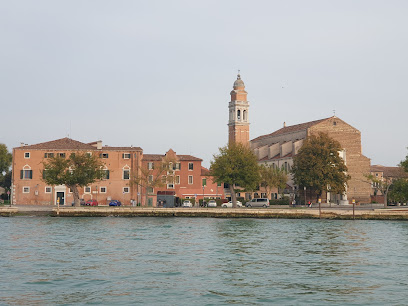
San Pietro di Castello
Discover the tranquil beauty of San Pietro di Castello, a hidden island gem in Venice filled with rich history, stunning architecture, and serene landscapes.

Cimitero Ebraico
Immerse yourself in the rich history of Venice at Cimitero Ebraico, a tranquil cemetery honoring the city's Jewish heritage and culture.

Unmissable attractions to see
Mercati di Traiano Museo dei Fori Imperiali
Discover the ancient wonders of the Mercati di Traiano Museo dei Fori Imperiali in Rome, where history and architecture come alive.

San Giorgio Maggiore Church
Experience the serene beauty and architectural splendor of San Giorgio Maggiore Church, a must-visit gem in Venice with breathtaking views and rich history.

Caffè Florian
Experience the elegance of Caffè Florian, Venice's historic café in Piazza San Marco, where tradition meets breathtaking views.

Grand Canal
Discover the stunning Grand Canal in Venice, a cultural landmark showcasing historical palaces and vibrant local life along its enchanting waters.

Galleria Giorgio Franchetti alla Ca' d'Oro
Discover the Galleria Giorgio Franchetti alla Ca' d'Oro, a stunning art museum in Venice showcasing Renaissance masterpieces and Venetian heritage.

Ponte delle Tette
Discover the Ponte delle Tette, a historic bridge in Venice, where stunning views and rich culture await every visitor in this enchanting city.
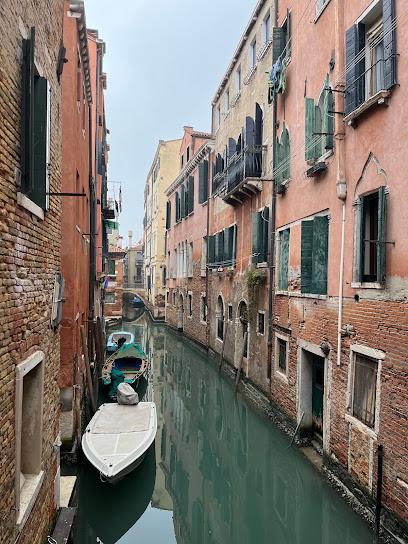
Villa Widmann – Foscari
Discover the elegance of Villa Widmann – Foscari, a historical gem on the Riviera del Brenta, showcasing Venetian nobility and lush gardens.

the wheel of venice - ruota panoramica
Discover breathtaking views of Lido di Jesolo from the iconic Wheel of Venice, a must-see attraction in the heart of Italy's stunning coastal landscape.

Bagni Alberoni Srl
Explore the vibrant atmosphere of Bagni Alberoni, where beachside relaxation meets exquisite seafood and lively entertainment in Venice's picturesque Lido.

Venissa
Experience the pinnacle of Venetian fine dining at Venissa, where traditional flavors meet modern culinary artistry in a breathtaking setting.

Chiesa di San Vidal
Discover the enchanting Chiesa di San Vidal in Venice, a stunning church, concert hall, and cultural hub that captures the city's rich heritage.

Church of Saint Cassian
Explore the stunning architecture and serene ambiance of the Church of Saint Cassian, a cherished Catholic church and tourist attraction in Venice.

Savorgnan Park
Discover the tranquil beauty of Savorgnan Park, a lush urban retreat in Venice, offering a perfect blend of nature and local culture.

Scuola Grande Confraternita di San Teodoro
Explore the Scuola Grande Confraternita di San Teodoro, a historic Venice landmark showcasing art, culture, and the vibrant history of the city.

Scuola Grande di San Marco
Explore the Scuola Grande di San Marco, a cultural gem in Venice featuring stunning art, history, and architectural beauty. A must-visit for every traveler!

Essential places to dine
Cà D'oro alla Vedova
Experience authentic Venetian cuisine at Cà D'oro alla Vedova - where tradition meets flavor in the heart of Venice.

Trattoria alla Madonna
Experience authentic Venetian cuisine at Trattoria alla Madonna—where tradition meets flavor in every bite.

Algiubagio Restaurant
Experience exquisite Italian cuisine and breathtaking canal views at Algiubagio Restaurant in Venice.

Osteria Alla Frasca
Experience authentic Italian cuisine at Osteria Alla Frasca in Venice - where tradition meets flavor in every dish.

Restaurant La caravella
Experience authentic Venetian cuisine at Restaurant La Caravella - where tradition meets elegance in every dish.

Ristorante Florida Venezia
Experience authentic Italian cuisine at Ristorante Florida in Venice; where every meal is a celebration of flavor amidst stunning canal views.

Ristorante Riviera
Discover Ristorante Riviera: A top-tier destination for seafood lovers in Venice offering stunning canal views and exquisite Italian cuisine.

Restaurant Terrazza Danieli
Experience luxurious dining at Restaurant Terrazza Danieli with stunning views and exquisite Italian cuisine on Venice's Grand Canal.

La Colombina
Experience authentic Italian flavors at La Colombina, a charming restaurant in Venice's Cannaregio district, perfect for memorable dining.
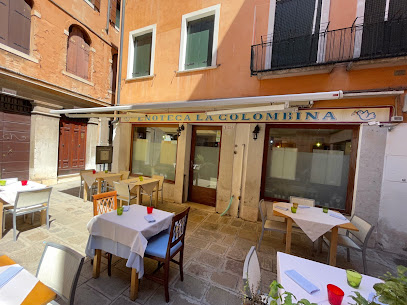
Osteria Ca' del Vento
Experience authentic Italian and seafood cuisine at Osteria Ca' del Vento, a hidden gem in Venice's enchanting canals.
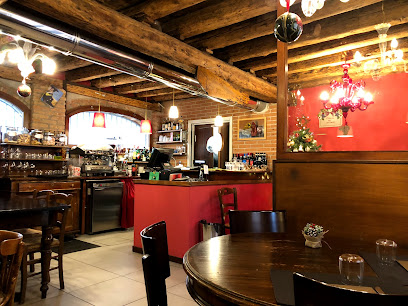
Ristorante Trattoria Africa
Discover authentic seafood cuisine at Ristorante Trattoria Africa in Venice – where local flavors meet charming ambiance.

Restaurant Taverneta A La Scuea
Experience exquisite seafood dining at Taverneta A La Scuea, where Venetian tradition meets culinary innovation in an unforgettable setting.
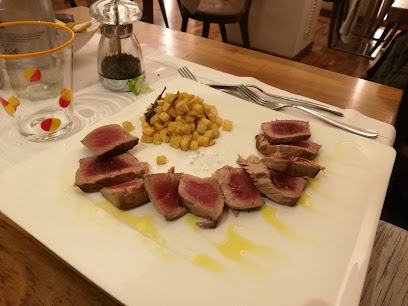
Ombra del Leone
Experience authentic Italian cuisine with breathtaking views at Ombra del Leone in Venice's vibrant Sestiere San Marco.

Ristorante Isola D'Oro
Experience authentic Venetian cuisine at Ristorante Isola D'Oro, where traditional flavors meet breathtaking views in the heart of Venice.

Ristorante Glam
Experience exquisite Italian fine dining at Ristorante Glam in Venice - where culinary artistry meets elegance.

Markets, malls and hidden boutiques
Le Barche mall
Explore the vibrant Le Barche Mall in Venice for a delightful shopping experience with top brands and local treasures.

Louis Vuitton Venice
Discover the elegance of Louis Vuitton in Venice, where luxury meets Venetian artistry in a stunning shopping experience.
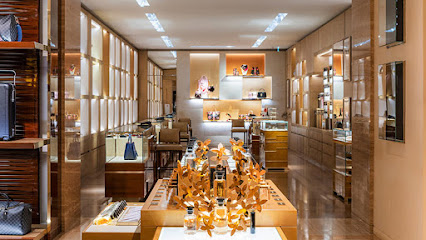
Green Apple
Discover the delectable world of artisanal ice creams at Green Apple in Venice, a sweet retreat for every traveler.

Galleria Barcella
Discover Galleria Barcella, a vibrant shopping mall in Venice, offering a unique blend of local culture and diverse retail experiences.
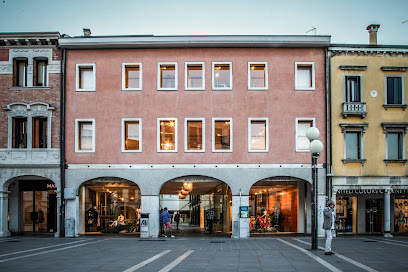
La Bottega Dei Mascareri
Explore the enchanting La Bottega Dei Mascareri in Venice for exquisite handcrafted masks, a true reflection of Venetian artistry and culture.
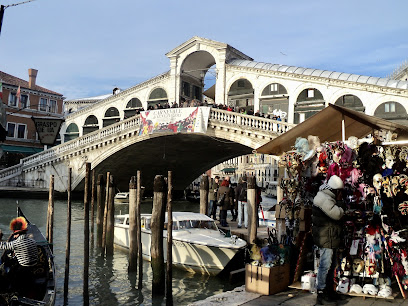
Ottica Urbani
Discover exquisite eyewear at Ottica Urbani, the premier optician in Venice, known for its unique selection and exceptional customer service.

Il Grifone
Discover Il Grifone, Venice's premier destination for exquisite handcrafted leather goods and timeless Italian craftsmanship.

Calzature Parutto
Discover unique, stylish footwear at Calzature Parutto, a delightful shoe store in the heart of Venice's Sestier San Polo district.

SOGNO VENEZIANO ATELIER
Explore the captivating world of Venetian costumes and masks at Sogno Veneziano Atelier, the ultimate destination for Carnival enthusiasts in Venice.

Ottica Carraro
Discover exceptional eyewear and personalized service at Ottica Carraro, Venice’s premier optician, where craftsmanship meets style.

free view from the terrace
Experience luxury shopping with breathtaking views in the heart of Venice's stunning architecture.

Prodotti Tipici
Explore the authentic flavors of Venice at Prodotti Tipici, your go-to grocery store for local delicacies and gourmet treats.

Signor Blum - Bottega artigiana Venezia
Experience the artistry of Venice at Signor Blum, a charming handicraft shop offering unique gifts and handcrafted treasures.

Marialuisa Benetti Bride
Discover exquisite bridal gowns and accessories at Marialuisa Benetti Bride, Venice's premier bridal shop for a dream wedding experience.

Emilio Ceccato
Discover unique Venetian fashion and souvenirs at Emilio Ceccato, a charming clothing store in the heart of Venice, Italy.

Essential bars & hidden hideouts
Bar San Calisto | Roma
Experience the authentic charm of Rome at Bar San Calisto, where local culture meets delicious Italian drinks in a vibrant atmosphere.
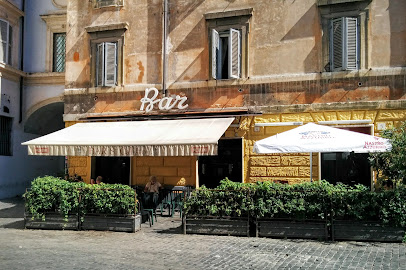
Drink Kong
Experience innovative cocktails in a stylish atmosphere at Drink Kong, Rome's premier cocktail bar, perfect for an unforgettable night out.

Jerry Thomas Speakeasy
Experience the allure of the Prohibition era at Jerry Thomas Speakeasy, Rome's premier cocktail bar known for its innovative drinks and intimate ambiance.

Irish Pub Santa Lucia
Discover the cozy Irish Pub Santa Lucia in Venice - a perfect blend of authentic Irish culture and Venetian charm with great food and live music.

L'Antiquario
Discover the elegance of L'Antiquario, Naples' premier cocktail bar known for its artisanal drinks and charming vintage ambiance.

Il Santo Bevitore craft pub
Discover an authentic Venetian experience at Il Santo Bevitore, a craft pub offering the finest selection of Italian beers in a cozy setting.

Skyline Rooftop Bar
Experience breathtaking views and exquisite cocktails at Venice's Skyline Rooftop Bar, a luxurious escape above the enchanting canals.
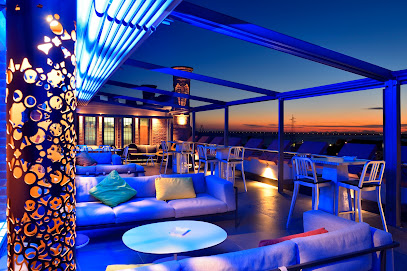
TiME Social Bar
Experience the vibrant nightlife of Venice at TiME Social Bar, where creative cocktails and delicious tapas await in a lively atmosphere.

The Basement - Pub. Cocktail Bar. Events
Discover The Basement in Rome: A vibrant pub and cocktail bar offering cocktails, a lively atmosphere, and unforgettable nightlife experiences.

Rosy O'Grady's Pub
Rosy O'Grady's Pub: An authentic Irish pub experience in Rome, offering great food, drinks, and live music in a cozy atmosphere.
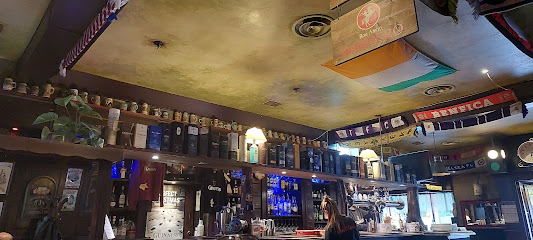
L'Altro Verdi
Experience the authentic Venetian nightlife at L'Altro Verdi, where delightful drinks and a warm atmosphere await you in the heart of Venice.

Chet Bar
Discover Chet Bar in Venice: A cozy haven for cocktails, friendly vibes, and a taste of local nightlife.

17/19 Stenfield's & c.
Experience the vibrant nightlife of Rome at 17/19 Stenfield's & c., where cocktails and culinary delights await in a chic bistro-bar atmosphere.

Wine Bar 5000
Experience the charm of Venice at Wine Bar 5000, where exquisite wines and a lively atmosphere await every visitor.

Bar Longhi
Experience the elegance of Venetian culture at Bar Longhi, a perfect blend of exquisite drinks, delightful snacks, and historical charm.

Local Phrases about Venetian Riviera
-
- HelloCiao
[chow] - GoodbyeArrivederci
[ar-ree-ve-der-chee] - YesSì
[see] - NoNo
[no] - Please/You're welcomePer favore/Prego
[pair fa-vor-eh/pre-go] - Thank youGrazie
[grat-zee-eh] - Excuse me/SorryMi scusi/Scusa
[mee skoo-zee/skoo-za] - How are you?Come stai?
[ko-meh stai] - Fine. And you?Bene. E tu?
[beh-neh. eh too] - Do you speak English?Parli inglese?
[par-lee een-gleh-zeh] - I don't understandNon capisco
[non ka-pee-sko]
- HelloCiao
-
- I'd like to see the menu, pleaseVorrei vedere il menu, per favore
[vo-rreh veh-deh-reh eel meh-no, pair fa-vor-eh] - I don't eat meatNon mangio carne
[non man-joh kar-neh] - Cheers!Salute!
[sa-loo-teh] - I would like to pay, pleaseVorrei pagare, per favore
[vo-rreh pa-ga-reh, pair fa-vor-eh]
- I'd like to see the menu, pleaseVorrei vedere il menu, per favore
-
- Help!Aiuto!
[ai-oo-toh] - Go away!Vai via!
[vai vee-ah] - Call the Police!Chiama la polizia!
[kee-ah-ma lah po-lee-tsee-ah] - Call a doctor!Chiama un medico!
[kee-ah-ma oon meh-dee-ko] - I'm lostMi sono perso
[mee so-no pair-so] - I'm illSto male
[sto mah-leh]
- Help!Aiuto!
-
- I'd like to buy...Vorrei comprare...
[vo-rreh com-pra-reh] - I'm just lookingSto solo guardando
[sto so-lo gwar-dan-do] - How much is it?Quanto costa?
[kwan-to kos-ta] - That's too expensiveÈ troppo caro
[eh tro-poh ka-ro] - Can you lower the price?Puoi abbassare il prezzo?
[pwah-ee ab-ba-sa-reh eel pret-zo]
- I'd like to buy...Vorrei comprare...
-
- What time is it?Che ore sono?
[keh o-re so-no] - It's one o'clockÈ l'una
[eh loo-nah] - Half past (10)Sono le dieci e mezza
[so-no le dee-eh-cheh eh meh-tsa] - MorningMattina
[mat-tee-nah] - AfternoonPomeriggio
[po-meh-ree-joh] - EveningSera
[seh-rah] - YesterdayIeri
[yeah-ree] - TodayOggi
[oh-djee] - TomorrowDomani
[do-mah-nee] - 1Uno
[oo-no] - 2Due
[doo-eh] - 3Tre
[treh] - 4Quattro
[kwat-tro] - 5Cinque
[cheen-kweh] - 6Sei
[say] - 7Sette
[set-teh] - 8Otto
[ot-toh] - 9Nove
[no-veh] - 10Dieci
[dee-eh-chee]
- What time is it?Che ore sono?
-
- Where's a/the...?Dov'è...?
[do-veh] - What's the address?Qual è l'indirizzo?
[kwal eh leen-dee-ree-tso] - Can you show me (on the map)?Puoi mostrarmi (sulla mappa)?
[pwah-ee mos-trar-mee soo-lah mah-pah] - When's the next (bus)?Quando passa il prossimo (autobus)?
[kwan-do pass-sa eel pross-see-mo ow-toh-boos] - A ticket (to ....)Un biglietto (per ....)
[oon beel-yet-toh pair]
- Where's a/the...?Dov'è...?
History of Venetian Riviera
-
The origins of Venice date back to the 5th century AD when the Veneto mainland was invaded by various Germanic tribes. Seeking refuge, the local population fled to the marshy lagoon islands. Over time, these islands were interconnected through a series of bridges and canals, giving birth to the unique city of Venice.
-
By the 9th century, Venice had established itself as a formidable maritime republic. Its strategic location allowed it to dominate trade between Europe and the East. The Venetian Arsenal, one of the largest industrial complexes of the Middle Ages, was instrumental in building the powerful Venetian fleet.
-
One of Venice's most famous sons, Marco Polo, embarked on a 24-year journey to the East in the 13th century. His travels to the court of Kublai Khan in China were documented in 'The Travels of Marco Polo,' which provided Europe with one of its first comprehensive looks at the cultures and wealth of the East.
-
The Renaissance period marked a golden age for Venice. The city became a center of art, architecture, and literature. Renowned artists like Titian, Tintoretto, and Veronese left an indelible mark on Venetian culture, creating masterpieces that still attract art lovers from around the world.
-
The 18th century saw the decline of Venice as a maritime power. The city was eventually conquered by Napoleon in 1797, marking the end of the Venetian Republic. Venice was later handed over to the Austrian Empire until it became part of the Kingdom of Italy in 1866.
-
Today, Venice is one of the world's most visited tourist destinations. While it faces challenges such as flooding and over-tourism, the city's rich history and cultural heritage continue to captivate visitors. Efforts are ongoing to preserve its unique environment and historical landmarks.
Venetian Riviera Essentials
-
The Venetian Riviera is well-connected by various modes of transportation. The nearest major airport is Venice Marco Polo Airport (VCE), located about 13 kilometers from Venice city center. From the airport, you can take a water taxi, public boat (Alilaguna), or bus (ACTV or ATVO) to reach various parts of the Venetian Riviera. Alternatively, Treviso Airport (TSF) is another option, especially for low-cost carriers. From Treviso, you can take a shuttle bus to Venice. If you are already in Italy, high-speed trains connect Venice to major cities like Rome, Milan, and Florence.
-
Within the Venetian Riviera, you have multiple transportation options. Water buses (vaporetto) are the primary means of transport in Venice and its islands. ACTV operates the water buses, which can take you to popular destinations like Murano, Burano, and Lido. For a more luxurious experience, consider hiring a private water taxi. On the mainland, buses and trams are available for getting around, especially in Mestre. If you plan to explore further, renting a car is a convenient option, but keep in mind that cars are not allowed in Venice proper.
-
The official currency in Italy is the Euro (EUR). Credit and debit cards are widely accepted in hotels, restaurants, and shops. However, it is advisable to carry some cash for smaller establishments, market purchases, and tips. ATMs are plentiful, especially in tourist areas. Note that some machines may charge a withdrawal fee, so it's best to check with your bank beforehand.
-
The Venetian Riviera is generally safe for tourists. However, like any popular tourist destination, pickpocketing can be an issue, especially in crowded areas such as Piazza San Marco and Rialto Bridge. Always keep an eye on your belongings and avoid carrying large sums of cash. Be cautious in areas like Mestre at night, as they have higher crime rates compared to the tourist zones. If you feel unsafe, seek assistance from local authorities or your hotel staff.
-
In case of an emergency, dial 112, the European emergency number, to reach police, medical services, or fire departments. Venice has several hospitals and clinics, including the Ospedale SS. Giovanni e Paolo and Ospedale dell'Angelo in Mestre. Pharmacies are widely available and can provide over-the-counter medications. It's recommended to have travel insurance that covers medical emergencies. For minor issues, you can visit local pharmacies for advice and medication.
-
Fashion: Do dress modestly when visiting churches and religious sites. Avoid beachwear in city areas. Religion: Do respect local customs, and always cover your shoulders and knees when entering religious sites. Public Transport: Do validate your ticket before boarding a water bus or tram. Don’t forget to validate your ticket, as fines are steep. Greetings: Do greet people with a 'Buongiorno' (Good morning) or 'Buonasera' (Good evening). Eating & Drinking: Do try local specialties like cicchetti (small snacks) and spritz (a Venetian aperitif). Don’t eat while walking, as it is considered impolite.
-
To experience the Venetian Riviera like a local, take a stroll through the less touristy neighborhoods such as Cannaregio and Dorsoduro. Visit local markets like the Rialto Market to buy fresh produce and seafood. Try to learn a few basic Italian phrases; locals appreciate the effort and it can enhance your experience. For a unique dining experience, visit a bacaro (a traditional Venetian bar) and try the variety of cicchetti. Lastly, consider taking a gondola ride in the quieter canals rather than the crowded Grand Canal for a more authentic experience.
Nearby Cities to Venetian Riviera
-
Things To Do in Piran
-
Things To Do in Portorož
-
Things To Do in Verona
-
Things To Do in Izola
-
Things To Do in Rovinj
-
Things To Do in Koper
-
Things To Do in Ravenna
-
Things To Do in Trieste
-
Things To Do in Nova Gorica
-
Things To Do in Sežana
-
Things To Do in Bologna
-
Things To Do in Pula
-
Things To Do in Modena
-
Things To Do in Postojna
-
Things To Do in Rimini













